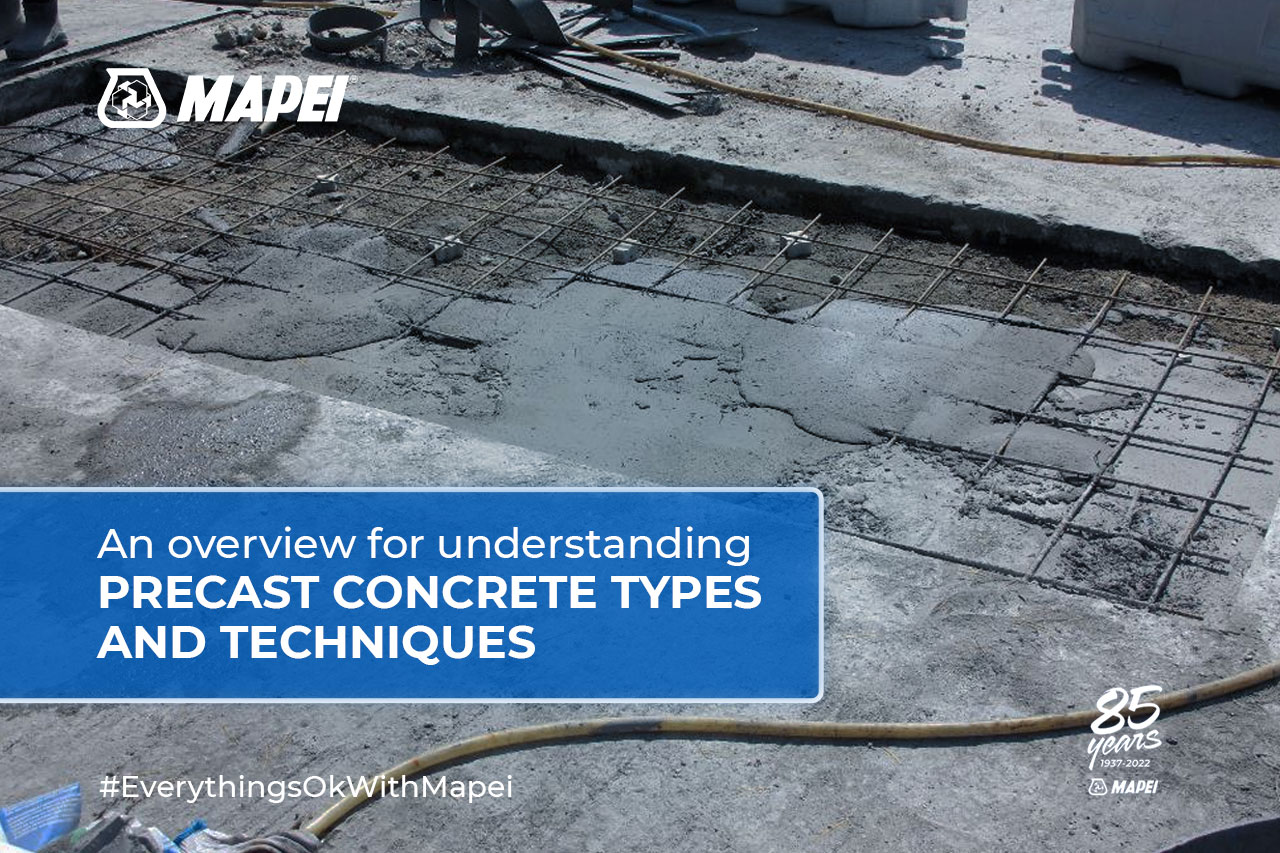
Precast concrete is portable concrete that is cast in one location for use in another. The majority of precast production takes place at the facilities of specialized suppliers, but in some cases, due to geographical or economic constraints, the size of the product, or the difficulty of access, the portions are cast on or near the construction site.
The distance between the point of production and the point of use can vary greatly. For instance, there may be no more than a few meters between the two points at a site where the size of the components makes it impossible to transport them from an existing factory, or there may be several meters if a substitute bridge is cast next to an existing bridge that is beyond repair and then ramped into place.
The design, size, construction grade, and stability system are all significantly influenced by the characteristics of the precast concrete construction system. The majority of structural members used in precast concrete constructions are built in factories that are not on the construction site. They are then brought to the development site to be put into place.
To connect various types of structural parts, various connections, such as the connection between a panel and a column, have been designed. The applied loads are then transferred from the structure to the base in this way. Before settling on a concrete admixture design, designers should take into account the possibilities, constraints, details, manufacturer, transport, erection, and serviceability stages.
By using precast concrete products, you can expedite the completion of your project and benefit from the financial reductions that come with using concrete that is precast offsite.
A good precast concrete product is created by bringing together the advantages of versatility, control, efficiency, and sustainability in addition to convenience and workflow. Here is further information on the effects precast concrete has in each of these sectors.
The adaptability of precast concrete products has already been mentioned in passing, but we want to emphasize it once again as one of its key advantages. A significant factor in why precast concrete has applications in such a broad range of industries and uses is its flexibility to be shaped to incorporate the colors, textures, and sizes you desire. Contrary to popular belief, precast concrete is more versatile than other types of construction.
Precast concrete is produced in a completely controlled environment, therefore there is no chance that external factors like the weather would affect the output quality or timetable. To guarantee that all precast concrete products are regularly cured in perfect conditions, you have complete control over the weather. You may be sure that manufacturing these precast concrete components will be completed on schedule because you have access to these optimal circumstances, which eliminate weather delays for on-site pouring.
The controlled industrial environment leads to efficiency. The entire construction process is sped up when precast concrete can be produced year-round in a plant environment. The necessity to plan concrete pouring for a brief period of time on-site when bad weather could delay the entire project is suddenly gone.
Instead, the procedure is now so effective that you could even order the precast components in advance and keep them until you needed to install them on-site. Because assembly line procedures use less labor and lessen the strain of coordinating on-site specialized personnel and logistics, it also helps you save time and money.
These blocks come in a variety of sizes and shapes. Concrete blocks are formed in a machine. Specifications of the standard-size blocks used in various works.
Prefabricated RCC lintels are a simple option for covering the window, door, and passage openings. Because there is no drying time, precast lintels inadvertently speed up construction.
Precast RCC lintels, which are often cast in wooden molds and hardened well in advance, are suitable for short areas up to 2 meters.
Prefabricated door and window frames are other options. The frameworks of the doors or windows are reinforced with steel bars that range in diameter from 4 to 40 mm.
To attach hinges and other hardware to them, suitable wooden blocks are utilized. To create a lasting mix, concrete is wobbled on a table vibrator before being put into the mold.
If you decide to use precast concrete, you will need to employ a precast concrete manufacturer whether you're working on a project that is identical to one of the precast concrete buildings or structures mentioned above or something completely different. You need a producer who can generate the resources you need to complete the project and fulfill your specifications if you want to take full use of precast concrete's advantages.

Comments
Load more comments